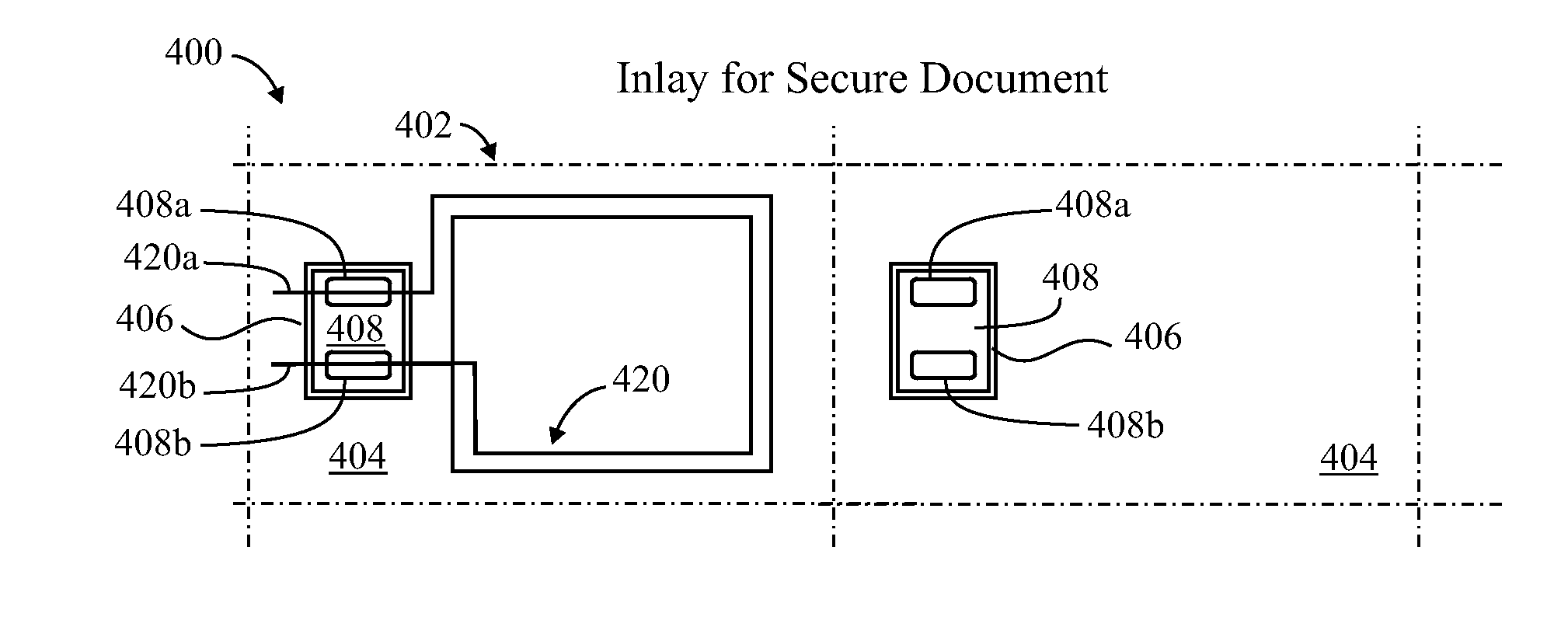Transferring antenna structures to RFID components
a technology of antenna structure and rfid, applied in the field of inlay substrates, can solve the problems of difficult volume production automation, high unreliability, and different geometrical dimensions of coils, and achieve the effect of facilitating the transfer of antenna structures
- Summary
- Abstract
- Description
- Claims
- Application Information
AI Technical Summary
Benefits of technology
Problems solved by technology
Method used
Image
Examples
Embodiment Construction
[0094]Various embodiments will be described to illustrate teachings of the invention(s), and should be construed as illustrative rather than limiting. In the main, electronic passport covers with inlay substrates having leadframe modules may be used to illustrate the embodiments.
Forming Recesses in a Substrate
[0095]FIG. 2A illustrates a technique 200 for forming a recess 206 in a substrate 202 (such as an inlay substrate), using a laser 230. The inlay substrate 202 may be a single layer of Teslin™ (for example), having a thickness “t” of 356 μm. A typical size (width dimensions) for the recess 206, to accommodate a chip module with a lead frame, may be approximately 5 mm×8 mm The recess may extend completely through the inlay substrate, resulting in a “window-type” recess. The recess may extend only partially, such as 260 μm through the inlay substrate, resulting in a “pocket-type” recess (FIG. 1B illustrates a pocket-type recess).
[0096]The laser 230 emits a beam (dashed line), targ...
PUM
| Property | Measurement | Unit |
|---|---|---|
| Thickness | aaaaa | aaaaa |
| Pressure | aaaaa | aaaaa |
| Size | aaaaa | aaaaa |
Abstract
Description
Claims
Application Information
 Login to View More
Login to View More - R&D
- Intellectual Property
- Life Sciences
- Materials
- Tech Scout
- Unparalleled Data Quality
- Higher Quality Content
- 60% Fewer Hallucinations
Browse by: Latest US Patents, China's latest patents, Technical Efficacy Thesaurus, Application Domain, Technology Topic, Popular Technical Reports.
© 2025 PatSnap. All rights reserved.Legal|Privacy policy|Modern Slavery Act Transparency Statement|Sitemap|About US| Contact US: help@patsnap.com



